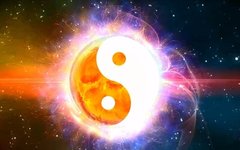The Theory of Yin-Yang and Five Elements in Traditional Chinese Medicine: Zang-Fu and Interior-Exterior Relationships
Our ancestors discovered and believed that the natural world is a vast universe, while the human body is a small universe. In nature, there are the five elements: metal, wood, water, fire, and earth, while in the human body, there are the heart, liver, spleen, lungs, and kidneys, which correspond to each other.
By understanding the Five Elements and their changing laws, we can more easily grasp the essence of life and use it to guide our lives, ensuring that our lives can operate normally and that we can coexist harmoniously with nature.

Through centuries of observation, research, and clinical practice, people have identified the five zang organs and six fu organs based on their attributes, finding corresponding elements in nature that are remarkably similar, facilitating understanding and research.
“Wood represents bending and straightening,” which signifies growth, upward movement, and smoothness, corresponding to the liver in the human body.
“Metal represents transformation,” which signifies sinking, purging, and convergence, corresponding to the lungs in the human body.
“Water represents moistening and descending,” which signifies nourishment, downward movement, coolness, and storage, corresponding to the kidneys in the human body.
“Earth represents nurturing and supporting,” which signifies generation, bearing, and receiving, corresponding to the spleen (which is roughly equivalent to the pancreas in anatomy, not the spleen).
“Fire represents rising and heating,” which signifies warmth and upward movement, corresponding to the heart in the human body.
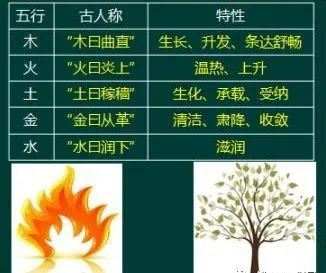
Thus, the correspondence between the five zang organs and the five elements is: liver belongs to wood, lungs belong to metal, kidneys belong to water, spleen belongs to earth, and heart belongs to fire.
Physiological Functions of the Five Zang Organs
1, Liver: Corresponds to Wood in the Five Elements.
It governs the smooth flow of qi, stores blood, connects to tendons, manifests in nails, opens to the eyes, corresponds to anger in emotions, and tears in fluids.
Governing smooth flow: It maintains the smooth and unobstructed flow of qi throughout the body, ensuring that it is free from stagnation and depression. This indicates that the liver, like trees, transports clean blood throughout the body, nourishing growth.
Storing blood: The liver is the reservoir of blood, purifying it. The liver’s detoxification process is essentially the process of cleansing the blood, making it the primary detoxifying organ in the body!
Connecting to tendons: If tendons, ligaments, and fascia become diseased, it indicates that blood is not nourishing the tendons, leading to joint dysfunction, fatigue, or numbness, and difficulty in flexion and extension. This shows a close relationship between tendon dysfunction and liver dysfunction.
Manifesting in nails: If nails are thin, soft, brittle, dull, or deformed, it indicates liver dysfunction. Conversely, changes in nails can also reflect liver function issues.
Opening to the eyes: Insufficient liver yin leads to dry eyes; insufficient liver yang leads to blurred vision; liver wind-heat leads to red, itchy, painful eyes; liver fire leads to red, swollen, painful eyes.
Corresponding to anger: Irritability and easy anger.
In fluids: Dry eyes, excessive tearing, or eye discharge.
The liver (gallbladder) is part of the immune system, with a facial color of green. Anger can harm the liver, and those who are easily angered are more likely to injure the liver. Observing the face, the liver can be divided into three reflection points: first, spots, dots, or acne on the bridge of the nose indicate decreased liver function; second, age spots appearing from the center of the eyebrows outward (to the temples) further indicate low liver function. Some people experience tearing, which is also related to liver function issues. The gallbladder area is located on the slopes on both sides of the bridge of the nose; gallbladder inflammation and gallstones are caused by decreased liver detoxification function. Women experiencing butterfly spots or acne are often due to hormonal imbalances affecting the reproductive system.
Digestion: Bile is secreted by the liver into the gallbladder and duodenum to aid in nutrient absorption. Pathological changes can lead to bitter water reflux, indigestion, stomach bloating, and abdominal distension.
2, Lungs: Correspond to Metal in the Five Elements.
They govern qi, control respiration, regulate the dispersal and descending of qi, and manage the water pathways, connecting to the skin, manifesting in body hair, opening to the nose, corresponding to sadness in emotions, and producing mucus in fluids.
Governing qi and controlling respiration: Symptoms include chest tightness, nasal congestion, shallow and short breathing, phlegm, cough, asthma, and difficulty breathing.
Regulating water pathways: If the water pathways are obstructed, it can lead to edema.
Connecting to the skin, manifesting in body hair: If the skin’s defensive function is weakened, it can lead to frequent colds, dry and withered skin, inflammation, and skin issues like acne and poor skin quality.
Opening to the nose, producing mucus: If lung qi fails to disperse, it can lead to nasal congestion and runny nose, loss of smell, chronic rhinitis, and allergic rhinitis. Lung heat can cause nasal congestion with yellow, turbid mucus, while lung dryness leads to nasal dryness, and lung cold leads to clear nasal discharge.
Corresponding to sadness: Excessive sadness can harm the lungs.
The lungs are delicate organs, with a nature similar to metal, requiring us to clear and nourish them. Thus, the lungs correspond to metal in the Five Elements, connecting to autumn.
The lungs distribute qi, blood, and body fluids to the skin and hair, nourishing and hydrating them, regulating sweat pores, body temperature, and resisting external pathogens. When lung qi is abundant, the skin is nourished and moist, sweat pores open and close normally, body temperature is appropriate, and external pathogens are less likely to invade. If lung qi is weak, the skin loses nourishment, sweat pores fail to regulate, leading to excessive or insufficient sweating, and body temperature becomes unstable, making it easy for external pathogens to invade.
The lungs (nose, throat, trachea, bronchi) are part of the respiratory system, with facial color appearing pale. The lower two-thirds of the forehead reflects lung (upper respiratory tract) function; if there are spots, acne, or abnormal colors, it indicates decreased respiratory function or disease.
According to the relationship of the “Five Elements,” the lungs and large intestine are interrelated; sometimes, diseases of the organs can reflect on the bowels, and vice versa. If a monkey-like spot appears in the center of the forehead, it indicates congenital lung dysfunction.
3, Kidneys: Correspond to Water in the Five Elements.
They govern water, store essence, and control growth, development, and reproduction, corresponding to fear in emotions, producing saliva in fluids, connecting to bones, governing bone marrow, communicating with the brain, manifesting in hair, and opening to the ears and lower yin. They are the foundation of congenital essence and storage.
Governing water: Abnormal fluid metabolism can lead to edema.
Storing essence: The kidneys receive qi; although respiration is governed by the lungs, the inhaled qi must be received by the kidneys.
Controlling growth, development, and reproduction: Kidney essence deficiency can lead to reproductive dysfunction, such as male impotence, premature ejaculation, nocturnal emissions, and female menstrual irregularities, loss of libido, and premature aging, potentially leading to infertility.
Corresponding to fear: “Fear causes qi to descend, shock causes qi to become chaotic,” leading to fullness in the lower abdomen and even incontinence.
In fluids: Saliva is transformed from kidney essence.
Connecting to bones, governing bone marrow, manifesting in hair: The growth, development, and repair of bones depend on kidney essence nourishment. When kidney essence is sufficient, bones are strong, limbs are agile, and movements are quick. If kidney essence is insufficient, bones may develop poorly or become brittle, leading to weakness in the waist and back, and limbs may become weak. Symptoms include weakness in the legs, back pain, osteoporosis, and easy fractures. Delayed development in children and decreased memory are also signs. “Teeth are the surplus of bones”: Teeth also rely on kidney essence for strength. If kidney essence is insufficient, children may experience delayed tooth development, and adults may have loose teeth. Hair is the external manifestation of the kidneys; kidney essence can transform blood, and hair relies on essence and blood for nourishment. Therefore, hair growth, loss, moisture, dryness, abundance, and thinning are all related to kidney essence. When kidney essence is sufficient, hair is abundant and black; when deficient, hair becomes dry, sparse, gray, and falls out.
Opening to the ears and lower yin: Insufficient kidney essence can lead to hearing loss, tinnitus, deafness, ear inflammation, and itching; abnormal kidney qi transformation can lead to urinary and bowel issues, such as frequent urination, nocturia, enuresis, and diarrhea.
They are the foundation of congenital essence and storage: The kidneys, or lower jiao, are cold and descend, thus corresponding to water in the Five Elements, opening to the ears and lower yin, connecting to bones, manifesting in hair, corresponding to fear in emotions, and producing saliva, connecting to winter.
The kidneys and bladder are interrelated, belonging to the urinary system, with facial color appearing dark. Since the kidneys are the foundation of congenital essence, aging begins with the kidneys. The kidneys govern bones and open to the ears; tinnitus is related to kidney deficiency (men call it kidney deficiency, women call it kidney insufficiency). Deaf children (except for congenital cases) are often due to side effects from injections that directly harm the kidneys. Dark circles under the eyes and black spots on the cheeks indicate signs of kidney function decline. In severe cases, this can lead to bone diseases like arthritis and rheumatism. The chin also belongs to the kidney area, where symptoms like lower back pain and weakness can be observed. Characteristics include using force when closing the mouth, leading to small pits or acne, indicating these issues (the color of the small pits should be consistent; if it is darker, it indicates a problem). This situation can also occur in women before and after their menstrual period, leading to feelings of soreness and fatigue. The bladder’s reflection point for both genders is located at the philtrum; if there are acne or blisters in this area, it indicates at least cystitis or urethritis, and in men, it may also indicate prostatitis.
4, Heart: Corresponds to Fire in the Five Elements.
It governs blood vessels and spirit, corresponds to joy in emotions, produces sweat in fluids, connects to the pulse, manifests in the face, and opens to the tongue.
Governing blood vessels: Heart blood deficiency can lead to palpitations, anxiety, and pallor. Blood stasis in the heart can lead to chest pain and a gray complexion.
Governing spirit: Symptoms include insomnia, vivid dreams, restlessness, slow reactions, forgetfulness, and mental fatigue.
Corresponding to joy: Excessive joy can harm the spirit.
In fluids: Excessive movement can lead to sweating.
Connecting to the pulse, manifesting in the face: Excessive heart qi can lead to a flushed face, often accompanied by high blood pressure and abnormal blood lipids; blood stasis in the heart can lead to purple cheeks and lips, indicating weak blood circulation.
Opening to the tongue: The tongue is the sprout of the heart. Heart qi deficiency can lead to a wrinkled or cracked tongue. Heart fire can lead to a bright red tongue tip. Blood stasis in the heart can lead to purple spots on the tongue. Abnormal heart spirit can lead to a curled tongue, stiff tongue, crooked tongue, or speech difficulties.
The heart is the sovereign organ, warm and upward, resembling the nature of fire, thus corresponding to fire in the Five Elements, connecting to summer. The heart and small intestine are interrelated.
5, Spleen: Corresponds to Earth in the Five Elements.
It governs transformation and transportation, corresponds to thought in emotions, produces saliva in fluids, connects to muscles, governs the four limbs, and opens to the mouth, manifesting in the lips. The spleen is the “foundation of postnatal essence,” the source of qi and blood transformation.
Governing transformation: It ascends clear qi, regulates blood, and if its function is disordered, it can lead to abdominal distension, poor appetite, loose stools, fatigue, and weight loss, as well as dampness, phlegm, and fluid retention, even leading to edema. The spleen controls the distribution of fluids throughout the body; if its function is disordered, it can lead to systemic edema.
Corresponding to thought: Excessive thinking can lead to qi stagnation, causing loss of appetite, dizziness, and abdominal fullness.
In fluids: Increased secretion of oral fluids can lead to drooling.
Connecting to muscles, governing the four limbs: Symptoms include obesity or emaciation. The spleen generates blood and governs transformation, delivering nutrients to the blood; it regulates blood flow within the vessels; it governs muscles, and when healthy, muscles are strong and developed; it governs the four limbs, and when functioning well, the limbs are strong.
Opening to the mouth: If the spleen’s function is impaired, the mouth may taste bland, and appetite may decrease; if damp-heat obstructs the spleen, symptoms may include a sweet taste, stickiness, bad breath, dry mouth, and clear teeth marks on the tongue; oral symptoms may include ulcers, inflammation, or sores at the corners of the mouth.
Manifesting in the lips: If the spleen’s function is impaired, the lips may appear pale; if spleen fire is excessive, the lips may appear bright red; if damp-heat obstructs the spleen, the lips may become dry and peel.
The spleen is the “warehouse” of the body, responsible for transporting qi and blood, and is the source of qi and blood transformation, resembling the nature of earth, which is the source of all things. Thus, the spleen corresponds to earth in the Five Elements, opening to the mouth, manifesting in the lips, producing saliva, corresponding to thought, and connecting to the long summer.
The spleen (stomach) belongs to the digestive system, with facial color appearing yellow. The spleen is the foundation of postnatal essence; in TCM, excessive thinking can lead to qi stagnation, resulting in poor appetite and inadequate qi and blood transformation. The spleen reflects on the tip of the nose; if there are blisters or discoloration, it indicates decreased spleen function, leading to spleen deficiency. Spleen dysfunction can also lead to stomach dysfunction, and if the stomach function declines, all five zang organs will be affected because “the stomach is the mother of the five zang organs.” The stomach reflection point is located on both sides of the nostrils; if there are abnormal colors, spots, or deep discoloration at the base of the nostrils, it indicates a history of stomach disease for at least 3-5 years. Rosacea further indicates digestive system issues, such as chronic gastritis, gastric acid, bloating, gastric ulcers, and duodenal ulcers, which, if neglected for a long time, can lead to cancer.
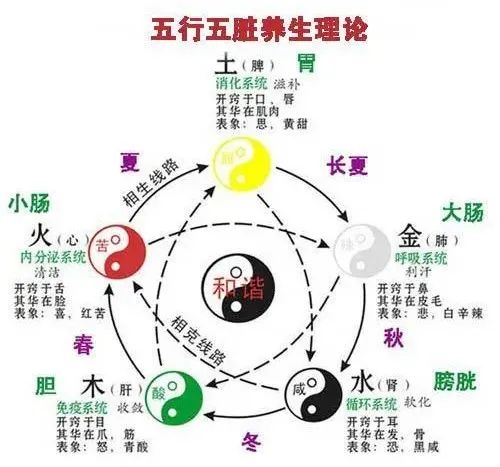
Relationship Between Zang and Fu Organs
The term “interior-exterior” means they share the same meridian, akin to a marital relationship or a work group, with one zang corresponding to one fu. The zang organs are yin (interior), while the fu organs are yang (exterior). The relationship between zang and fu is connected through meridians, meaning the meridians of the zang connect to the fu, and the meridians of the fu connect to the zang, allowing their qi to communicate and interact, thus influencing each other in pathological changes.
The relationships between zang and fu organs are: the heart and small intestine; the liver and gallbladder; the spleen and stomach; the lungs and large intestine; the kidneys and bladder; the pericardium and san jiao.
1, The heart corresponds to fire, and it is related to the small intestine.
The heart and small intestine meridians are interconnected, mutually corresponding. If there is heat in the heart, it can lead to oral and tongue ulcers. If heat from the heart transfers to the small intestine, symptoms may include short, red urine and painful urination. The small intestine governs absorption; if absorption is poor, it directly affects the heart, leading to insufficient blood supply and heart disease. The specific reflection point of the small intestine is located on the lower part of the eyeball; if small pimples or spots appear, it indicates a significant decline in the small intestine’s absorption function.
In daily life, from 11 AM to 1 PM is the time of the heart; however, the heart is not affected by pathogens, so the small intestine may bear the brunt. If there are issues with absorption, it can lead to small intestine diseases. When the small intestine is in its prime, if a person experiences facial flushing, palpitations, or chest tightness, it indicates a problem in the relationship between the heart and small intestine, signaling potential heart issues.
2, The liver corresponds to wood, and it is related to the gallbladder.
The gallbladder is attached to the liver; the zang and fu are interconnected, forming a relationship. Bile originates from the liver; if the liver’s smooth flow is disrupted, it affects the normal secretion of bile. Conversely, if bile secretion is abnormal, it can also affect the liver. Therefore, liver and gallbladder symptoms often appear simultaneously, such as jaundice, rib pain, bitter taste, and dizziness.
In traditional culture, the liver corresponds to the gallbladder, hence the phrase “the liver and gallbladder illuminate each other.” When gallbladder qi rises, liver qi can also rise.
3, The spleen corresponds to earth, and it is related to the stomach.
The spleen and stomach have a spousal relationship; if the spleen is weak, the stomach will also be weak, and vice versa.
In terms of characteristics, the spleen prefers dryness and dislikes dampness, while the stomach prefers moisture and dislikes dryness; the spleen governs ascending, while the stomach governs descending. In physiological functions, the stomach is the sea of food and drink, governing digestion; the spleen governs the transportation of fluids from the stomach, managing transformation. The two work together to coordinate moisture and dryness, ascending and descending, with the stomach receiving and the spleen transforming, forming a contradictory yet unified movement to complete the tasks of digestion, absorption, and transportation of food and drink.
If the stomach qi descends smoothly, the stomach qi can descend, allowing food and drink to move downward. If the stomach qi does not descend and instead rises, it can lead to nausea and vomiting. If the spleen qi does not ascend and instead sinks, it can lead to chronic diarrhea, prolapse of the rectum, or uterine prolapse.
Due to the close physiological relationship between the spleen and stomach, they mutually influence each other pathologically, so treatment often involves addressing both the spleen and stomach.
4, The lungs correspond to metal, and they are related to the large intestine.
The meridians are connected, mutually corresponding. If lung qi is descending, the large intestine’s qi can flow smoothly, allowing it to perform its function of transmission. Conversely, if the large intestine maintains its transmission, lung qi can also descend. For example, if lung qi is stagnant and loses its descending function, it may lead to obstruction in the large intestine’s transmission, resulting in constipation. Conversely, obstruction in the large intestine can also lead to abnormal lung qi descent, causing shortness of breath and coughing. In treatment, if the lungs have excess heat, it can be purged through the large intestine, allowing heat to be expelled from the large intestine. Conversely, if the large intestine is obstructed, it can also promote lung qi to clear the large intestine’s qi mechanism.
The lungs and large intestine are interrelated; when a person needs to defecate, it is the lung qi that helps expel the stool. Some skin symptoms are also related to the large intestine; in some cases, TCM may not directly treat the lung meridian but may directly address the large intestine meridian, resolving issues by clearing the fire from the large intestine.
5, The kidneys correspond to water, and they are related to the bladder.
The meridians are interconnected, mutually corresponding. Physiologically, one is a water zang, and the other is a water fu, working together to maintain the balance of fluid metabolism (with the kidneys being the primary organ). Kidney yang promotes the transformation of water, allowing it to descend into the bladder, which then expels urine through its own function. Pathologically, insufficient kidney yang can weaken bladder function, leading to frequent urination or enuresis; bladder damp-heat can also affect the kidneys, leading to symptoms like low back pain and hematuria.
The bladder’s qi transformation function depends on the strength of kidney qi; sufficient kidney qi is necessary to promote the bladder’s ability to open and close, allowing for normal storage and expulsion of urine.
6, The pericardium and san jiao.
The meridians are interconnected, mutually corresponding. For example, in clinical practice, in cases of febrile diseases with damp-heat combined pathogens, the san jiao can become obstructed, leading to symptoms like chest tightness, heaviness, reduced urination, and loose stools, indicating a problem in the qi level. If this development is not halted, the warm pathogenic factors can penetrate from the qi level into the nutrient level, leading to internal invasion of the pericardium, resulting in symptoms like coma and delirium.
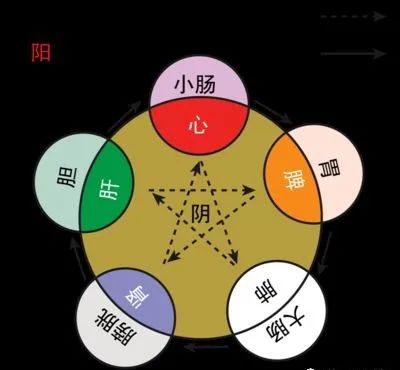
Physiological Functions of the Six Fu Organs
1, Gallbladder
The gallbladder is attached to the liver, storing bile, which is injected into the large intestine to promote food digestion; gallbladder qi is related to a person’s spirit and emotions, with symptoms like anxiety, insomnia, and vivid dreams being treated from the gallbladder perspective.
Gallbladder diseases include symptoms like vomiting bitter water, bile overflow, and yellowing of the face.
2, Stomach
The stomach governs reception and the fermentation of food and drink. In TCM, the stomach is referred to as the sea of food and drink. The stomach is the foundation of postnatal essence; when stomach qi is strong, recovery from illness is faster.
3, Small Intestine
The small intestine separates the clear from the turbid. The clear is nourishment, while the turbid is waste. It absorbs nourishment, which is then transported by the spleen to various parts of the body, while the remaining water is sent down to the bladder. Small intestine diseases can affect digestion and lead to abnormal urination.
4, Large Intestine
The large intestine receives the remnants from the small intestine. If the large intestine is deficient, it can lead to symptoms like bowel sounds and diarrhea. If it is excessive, it can lead to constipation.
5, Bladder
The bladder is one of the body’s organs for fluid metabolism. Body fluids are expelled through the lower jiao’s yang qi as urine.
6, San Jiao
The san jiao governs the body’s vaporization, the transformation of food essence, and fluid metabolism. The upper jiao governs respiration and blood vessels, referred to as qi; the middle jiao digests food and absorbs essence, transforming it into blood; the lower jiao separates the clear from the turbid.
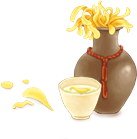

—Scan to Follow Us—
Ren Shou Feng Mao Kang Le Mei Hui

On the Double Ninth Festival, we express our deep respect for the elderly.
Shou Mao Excerpt: Be the best version of yourself.
Resonating in harmony, creating beauty!
Shou Mao Hand Health Exercises
The Shou Mao in our hearts.

